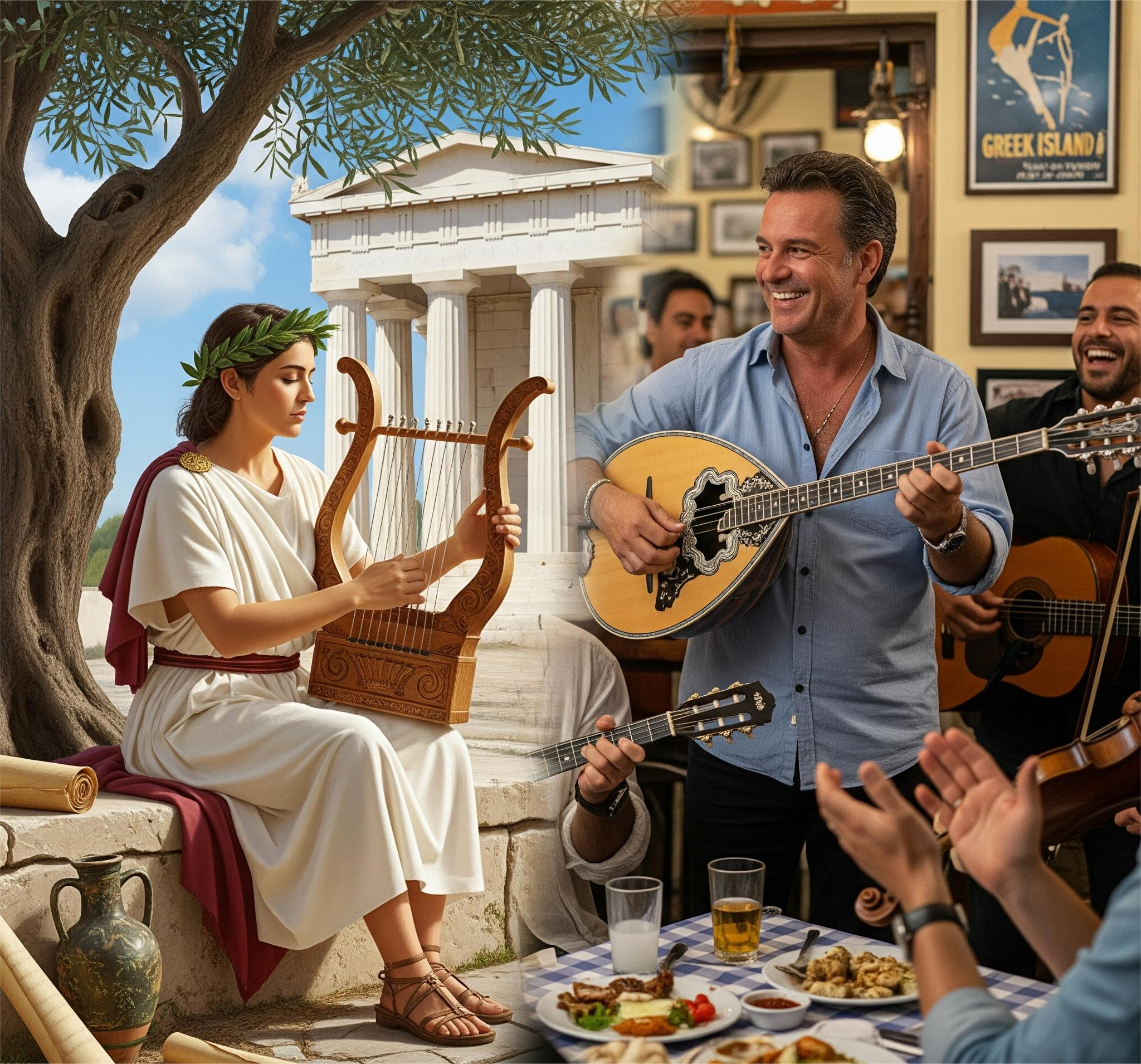Greek music is a vibrant tapestry woven from thousands of years of tradition, innovation, and cultural exchange. From the mystical melodies of the lyre in ancient temples to the soulful strums of the bouzouki in modern tavernas, music has always been central to Greek identity and expression. Let’s explore how Greek music evolved over the centuries — reflecting the heartbeat of a changing nation.
Ancient Echoes: Music in Classical Greece
Music was omnipresent in ancient Greek life — in religious rituals, theatre, banquets, and athletic events. The Greeks believed music had moral and healing powers, and its theory was studied by philosophers like Plato, Aristotle, and Pythagoras.
Instruments of the Era:
Lyre: A stringed instrument associated with Apollo and played during poetry recitations and education.
Aulos: A reed instrument, often played in pairs, used in dramatic performances and processions.
Kithara: A professional version of the lyre used by skilled musicians.
Hydraulis: The earliest form of a water-powered pipe organ — a marvel of ancient sound engineering.
Musical notation existed (though it looks nothing like today’s), and the Greeks developed early theories of harmony, scales (modes), and rhythm, laying the foundation for Western music theory.
Byzantine Period: Sacred Sounds and Chant
As Greece became part of the Byzantine Empire, music shifted toward Christian liturgy. Secular music faded into the background while Byzantine chant took center stage — complex, monophonic, and deeply spiritual.
Key characteristics:
No instruments — purely vocal and meant to elevate the soul.
Based on ancient Greek musical modes, but with new ecclesiastical overtones.
Sung in churches, monasteries, and court ceremonies.
The Byzantine era preserved much of Greek musical tradition while transforming it into a sacred art form that still echoes in Orthodox liturgy today.
Ottoman Influence and Folk Traditions
During the Ottoman occupation (15th–19th century), Greek music absorbed Eastern melodies, instruments, and rhythms, blending them with native folk elements. Out of this fusion, rich regional traditions were born.
Notable Folk Styles:
Dimotika: Rural folk songs dealing with love, war, and daily life, often accompanied by clarinet, violin, and laouto (lute).
Nisiotika: Island music known for its joyful rhythms and use of the tsampouna (island bagpipe).
Pontic and Cretan music: Rich in historical memory, danced to lyra, oud, and daouli drums.
Music became a way to preserve identity under foreign rule, passed down orally through generations.
Rebetiko: The Greek Blues
In the early 20th century, especially after the population exchange with Turkey (1923), Greek urban centers swelled with refugees. From their sorrow and resilience emerged Rebetiko — a raw, emotional musical style often called the Greek blues.
Themes: poverty, love, exile, prison, addiction.
Instruments: bouzouki, baglamas, guitar, accordion.
Rebetiko was originally underground and even banned, but eventually became embraced as a core part of Greek musical heritage.
Artists like Markos Vamvakaris, Vassilis Tsitsanis, and Sotiria Bellou transformed this music into an art form that defined a generation.
Modern Greek Music: Fusion and Identity
From the mid-20th century onward, Greek music entered the global stage, fusing tradition with modern sounds.
Key Genres and Movements:
Laïko: Mainstream popular music rooted in Rebetiko, with more accessible lyrics and arrangements.
Éntekhno: "Art music" combining poetry and orchestration — led by composers like Mikis Theodorakis and Manos Hadjidakis.
Pop and Rock: Greek artists blended international styles with native sensibilities — from Nana Mouskouri to Sakis Rouvas.
World music revival: Traditional instruments like the bouzouki, kanun, and lyra find new life in jazz, electronic, and experimental compositions.
Modern Greek music is as diverse as its people, resonating from Athens clubs to mountain festivals and global playlists.









